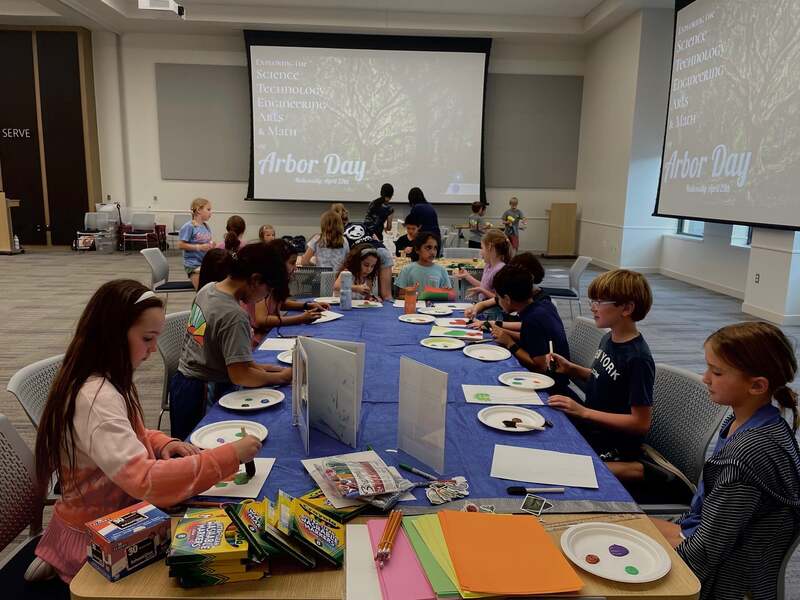rio slot
|
City in Mecklenburg-Vorpommern, Germany Town in Mecklenburg-Vorpommern, Germany Greifswald (German pronunciation: [ˈɡʁaɪfsvalt] ⓘ), officially the University and Hanseatic City of Greifswald (German: 💻 Universitäts- und Hansestadt Greifswald, Low German: Griepswoold, Kashubian: Grifiô) is the fourth-largest city in the German state of Mecklenburg-Western Pomerania 💻 after Rostock, Schwerin and Neubrandenburg. In 2024 it surpassed Stralsund for the first time, and became the largest city in 💻 the Pomeranian part of the state. It sits on the River Ryck, at its mouth into the Danish Wiek (Dänische 💻 Wiek), a sub-bay of the Bay of Greifswald (Greifswalder Bodden), which is itself a sub-bay of the Bay of Pomerania 💻 (Pommersche Bucht) of the Baltic Sea. It is the seat of the district of Western Pomerania-Greifswald, and is located roughly in 💻 the middle between the two largest Pomeranian islands of Rugia (Rügen) and Usedom. The closest larger cities are Stralsund, Rostock, 💻 Szczecin and Schwerin. It lies west of the River Zarow, the historical cultural and linguistic boundary between West (west of 💻 the river) and Central Pomerania (east of the river). The city derives its name from the dukes of Pomerania, the 💻 House of Griffin (Greifenherzöge), and thus ultimately from the Pomeranian Griffin (Pommerscher Greif), and its name hence translates as "Griffin's 💻 Forest". The University of Greifswald, which was founded in 1456, is the second-oldest university in the Baltic Region after the University 💻 of Rostock. The city is well-known for the ruins of Eldena Abbey (formerly Hilda Abbey), a frequent subject of Caspar 💻 David Friedrich's paintings, who was born in the city when it was part of Swedish Pomerania. Greifswald is the seat 💻 of the Pomeranian State Museum (Pommersches Landesmuseum). The recently built Ryck Barrier (Rycksperrwerk) protects the city from exceptionally high tides 💻 and storm surges moving up from the Baltic. The city's population was listed at 59,332 in 2024, including many of the 💻 12,500 students and 5,000 employees of the University of Greifswald. Greifswald draws international attention due to the university, its surrounding 💻 BioCon Valley, the Nord Stream 1 gas pipeline which ends at nearby Lubmin, and the Wendelstein 7-X nuclear fusion projects. Geography 💻 [ edit ] Greifswald is located in the northeast of Germany, approximately equidistant from Germany's two largest islands, Rügen and Usedom. 💻 The city is situated at the south end of the Bay of Greifswald, the historic centre being about five kilometres 💻 (three miles) up the river Ryck that crosses the city. The area around Greifswald is mainly flat, and hardly reaches 💻 more than 20 m above sea level. Two islands, Koos and Riems, are also part of Greifswald. Three of Germany's 💻 fourteen national parks can be reached by car in one hour or less from Greifswald. Greifswald is also roughly equidistant from 💻 Germany's two largest cities, Berlin (240 km or 150 mi) and Hamburg (260 km or 160 mi). The nearest larger 💻 cities are Stralsund and Rostock. The coastal part of Greifswald at the mouth of the Ryck, named Greifswald-Wieck, evolved from a 💻 fishing village. Today it provides a small beach, a marina and the main port for Greifswald. Climate [ edit ] Greifswald features 💻 an oceanic climate with some humid continental influence. Summers are pleasantly warm, although chilly at night. Due to its coastal 💻 location, heatwaves in Greifswald tend to be less extreme than other nearby locations inland. Winters are mild to cold with 💻 occasional cold fronts coming in from Scandinavia or Siberia. Precipitation is spread throughout the year and comparatively low by German 💻 standards, while sunshine hours are above the German average. Climate data for Greifswald (1991–2024 normals, extremes since 1975) Month Jan Feb 💻 Mar Apr May Jun Jul Aug Sep Oct Nov Dec Year Record high °C (°F) 15.1 (59.2) 18.4 (65.1) 21.2 (70.2) 28.6 (83.5) 32.1 (89.8) 💻 36.6 (97.9) 35.6 (96.1) 36.5 (97.7) 30.4 (86.7) 25.7 (78.3) 19.1 (66.4) 14.1 (57.4) 36.6 (97.9) Mean maximum °C (°F) 9.7 (49.5) 10.9 (51.6) 15.8 (60.4) 21.8 (71.2) 25.9 (78.6) 28.9 (84.0) 30.0 (86.0) 30.5 (86.9) 💻 25.1 (77.2) 19.7 (67.5) 14.1 (57.4) 10.3 (50.5) 32.3 (90.1) Mean daily maximum °C (°F) 3.3 (37.9) 4.2 (39.6) 7.5 (45.5) 12.5 (54.5) 16.9 (62.4) 20.3 (68.5) 22.7 (72.9) 22.8 (73.0) 18.5 (65.3) 13.2 (55.8) 💻 7.5 (45.5) 4.2 (39.6) 12.8 (55.0) Daily mean °C (°F) 1.1 (34.0) 1.6 (34.9) 4.0 (39.2) 8.1 (46.6) 12.4 (54.3) 15.9 (60.6) 18.1 (64.6) 18.0 (64.4) 14.2 (57.6) 9.6 (49.3) 5.2 (41.4) 2.2 (36.0) 9.2 (48.6) 💻 Mean daily minimum °C (°F) −1.2 (29.8) −1.0 (30.2) 0.6 (33.1) 3.9 (39.0) 7.7 (45.9) 11.2 (52.2) 13.7 (56.7) 13.5 (56.3) 10.3 (50.5) 6.3 (43.3) 2.7 (36.9) 0.0 (32.0) 5.6 (42.1) Mean minimum 💻 °C (°F) −9.7 (14.5) −8.6 (16.5) −5.4 (22.3) −1.8 (28.8) 2.0 (35.6) 6.4 (43.5) 9.6 (49.3) 8.8 (47.8) 5.1 (41.2) −0.2 (31.6) −3.5 (25.7) −7.6 (18.3) −12.9 (8.8) Record low °C (°F) −23.1 (−9.6) 💻 −23.2 (−9.8) −19.1 (−2.4) −6.7 (19.9) −1.8 (28.8) 3.0 (37.4) 7.0 (44.6) 5.2 (41.4) 2.0 (35.6) −4.6 (23.7) −12.1 (10.2) −17.4 (0.7) −23.2 (−9.8) Average precipitation mm (inches) 45.7 (1.80) 36.9 (1.45) 39.0 (1.54) 32.3 (1.27) 💻 52.3 (2.06) 60.5 (2.38) 67.1 (2.64) 71.7 (2.82) 52.3 (2.06) 49.9 (1.96) 43.3 (1.70) 48.4 (1.91) 599.4 (23.60) Average precipitation days (≥ 0.1 mm) 16.6 15.1 13.4 11.2 12.5 💻 13.2 14.4 13.4 12.8 15.7 15.7 17.1 171.2 Average snowy days (≥ 1.0 cm) 8.6 9.8 5.0 0.4 0 0 💻 0 0 0 0 1.2 5.2 30.2 Average relative humidity (%) 85.8 83.2 79.2 74.9 74.5 73.9 74.8 76.1 80.1 💻 83.6 87.4 87.6 80.1 Mean monthly sunshine hours 47.4 67.5 127.2 196.6 243.7 239.0 242.4 217.2 162.2 110.2 50.7 35.7 💻 1,739.7 Source 1: World Meteorological Organization[3] Source 2: Infoclimat[4] History [ edit ] Early history [ edit ] Greifswald was founded in 1199 💻 when Cistercian monks founded the Eldena Abbey.[5] In 1250, Wartislaw III, Duke of Pomerania, granted town privileges to Greifswald according 💻 to the Lübeck law.[5] Middle Ages and Reformation [ edit ] Medieval Fangenturm (Prisoners' Tower), Greifswald Eldena Abbey was founded in 1199. Today 💻 only its ruins remain. The eastern side of the historic city centre (seen from the cathedral tower) In medieval times, the site 💻 of Greifswald was an unsettled woodland which marked the border between the Danish Principality of Rügen and the Pomeranian County 💻 of Gützkow, which at that time was also under Danish control. In 1199, the Rugian Prince Jaromar I allowed Danish 💻 Cistercian monks to build Hilda Abbey, now Eldena Abbey, at the mouth of the River Ryck. Among the lands granted 💻 the monks was a natural salt evaporation pond a short way up the river, a site also crossed by an 💻 important south–north via regia trade route. This site was named Gryp(he)swold(e), which is the Low German precursor of the city's 💻 modern name – which means "Griffin's Forest." Legend says the monks were shown the best site for settlement by a 💻 mighty griffin living in a tree that supposedly grew on what became Greifswald's oldest street, the Schuhagen. The town's construction 💻 followed a scheme of rectangular streets, with church and market sites reserved in central positions. It was settled primarily by 💻 Germans in the course of the Ostsiedlung, but settlers from other nations and Wends from nearby were attracted, too. The salt 💻 trade helped Eldena Abbey to become an influential religious center, and Greifswald became a widely known market. When the Danes 💻 had to surrender their Pomeranian lands south of the Ryck, after losing the Battle of Bornhöved in 1227, the town 💻 succeeded to the Pomeranian dukes. In 1241, the Rugian prince Wizlaw I and the Pomeranian duke Wartislaw III both granted 💻 Greifswald market rights. In 1250, the latter granted the town a charter under Lübeck law, after he had been permitted 💻 to acquire the town site as a fief from Eldena Abbey in 1248. When Jazco of Salzwedel from Gützkow founded a 💻 Franciscan friary within the walls of Greifswald, the Cistercians at Eldena lost much of their influence on the city's further 💻 development. Just beyond Greifswald's western limits, a town-like suburb (Neustadt) arose, separated from Greifswald by a ditch. In 1264, Neustadt 💻 was incorporated and the ditch was filled in. Eldena Abbey and the major buildings of Greifswald were erected in the North 💻 German Brick Gothic (Backsteingotik) style, found along the entire southern coast of the Baltic. Due to a steady population increase, Greifswald 💻 became at the end of the 13th century one of the earliest members of the Hanseatic League, which further increased 💻 its trade and wealth. After 1296, Greifswald's citizens no longer needed to serve in the Pomeranian army, and Pomeranian dukes 💻 did not reside in the city. In 1456, Greifswald's mayor Heinrich Rubenow laid the foundations of one of the oldest universities 💻 in the world, the University of Greifswald, which was one of the first in Germany, and was, successively, the single 💻 oldest in Sweden and Prussia. In the course of Reformation, Eldena Abbey ceased to function as a monastery. Its possessions fell 💻 to the Pomeranian dukes; the bricks of its Gothic buildings were used by the locals for other construction. Eldena lost 💻 its separate status and was later absorbed into the town of Greifswald. The religious houses within the town walls, the 💻 priories of the Blackfriars (Dominicans) in the northwest and the Greyfriars (Franciscans) in the southeast, were secularized. The buildings of 💻 the Dominicans (the "black monastery") were turned over to the university; the site is still used as part of the 💻 medical campus. The Franciscan friary ("the "grey monastery") and its succeeding buildings are now the Pomeranian State Museum. During the Thirty 💻 Years' War, Greifswald was occupied by (Catholic) Imperial forces from 1627 to 1631,[6] and thereafter, under the Treaty of Stettin 💻 (1630), by (Protestant) Swedish forces.[7] 1631/48—1815: Sweden [ edit ] Bay of Greifswald Greifswald's lively market square (Marktplatz) During the Thirty Years' War, Swedish 💻 forces entered the Duchy of Pomerania in 1630.[6] Greifswald was besieged by Swedish troops on 12 June 1631[6] and surrendered 💻 on 16 June.[6] Gustavus Adolphus of Sweden had returned from Brandenburg to supervise the siege, and upon his arrival received 💻 the university's homage for the liberation from Catholic forces.[6] After the Thirty Years' War (1618–1648), Greifswald and the region surrounding 💻 it became part of the Kingdom of Sweden. Swedish Pomerania, as it was then called, remained part of the Swedish 💻 kingdom until 1815, when it became part of the Kingdom of Prussia as the Province of Pomerania. In 1871, it 💻 devolved to Germany. The Thirty Years' War had caused starvation throughout Germany, and by 1630 Greifswald's population had shrunk by two-thirds. 💻 Many buildings were left vacant and fell into decay. Soon, other wars followed: the Swedish-Polish War and the Swedish-Brandenburg War 💻 both involved the nominally Swedish town of Greifswald. In 1659 and 1678, Brandenburgian troops bombarded the town. The first bombardment 💻 hit mainly the northeast part of town, wrecking 16 houses. The second bombardment leveled 30 houses and damaged hundreds more 💻 all over the city. Cannonballs of this second bombardment can still be seen in the walls of St Mary's Church. During 💻 the Great Northern War (1700–1721, Greifswald was compelled to house soldiers. While besieging neighboring Stralsund, Russian tsar Peter the Great 💻 allied with George I of Great Britain in the Treaty of Greifswald. Large fires in 1713 and 1736 destroyed houses 💻 and other buildings, including City Hall. The Swedish government had issued decrees in 1669 and 1689 absolving anyone of taxes 💻 who built or rebuilt a house. These decrees remained essentially in force, under Prussian administration, until 1824.[8] In 1763, Greifswald Botanic 💻 Garden was founded. Marktplatz) The central market square ( 1815 – today: Germany [ edit ] Caspar David Friedrich (1774–1840) depicted his hometown 💻 in several paintings; this is Wiesen bei Greifswald (Meadows near Greifswald), 1820. Woman at the 'fishers well', by Jo Jastram in 💻 the 20th century During the 19th century, Greifswald attracted many Polish students.[9] After Breslau (now Wrocław, Poland) and Berlin, Greifswald hosted 💻 the third-largest group of Polish students in Germany.[10] About 1900, the town – for the first time since the Middle Ages 💻 – expanded significantly beyond the old town walls. Also, a major railway connected Greifswald to Stralsund and Berlin; a local 💻 railway line further connected Greifswald to Wolgast. The city survived World War II without much destruction, even though it housed a 💻 large German Army (Wehrmacht) garrison. During the war it was a site of a camp for prisoners of war held 💻 by Nazi Germany called Stalag II-C.[11] In April 1945, German Army Colonel (Oberst) Rudolf Petershagen defied orders and surrendered the 💻 city to the Red Army without a fight. From 1949 to 1990, Greifswald was part of the German Democratic Republic (DDR). 💻 During this time, most historical buildings in the medieval parts of the city were neglected and a number of old 💻 buildings were pulled down. The population increased significantly, because of the construction of a nominal 1760 MW Soviet-made nuclear power 💻 plant in Lubmin, which was closed in the early 1990s. New suburbs were erected in the monolithic industrial socialist style 💻 (see Plattenbau). They still house most of the city's population.[citation needed] These new suburbs were placed east and southeast of 💻 central Greifswald, shifting the former town center to the northwestern edge of the modern town. Reconstruction of the old town began 💻 in the late 1980s. Nearly all of it has been restored. Before that almost all of the old northern town 💻 adjacent to the port was demolished and subsequently rebuilt. The historic marketplace is considered one of the most beautiful in 💻 northern Germany. The town attracts many tourists, due in part to its proximity to the Baltic Sea. Greifswald's greatest population was 💻 reached in 1988, with about 68,000 inhabitants, but it decreased afterward to 55,000, where it has now stabilized. Reasons for 💻 this included migration to western German cities as well as suburbanisation. However, the number of students quadrupled from 3,000 in 💻 1990 to more than 11,000 in 2007 and the university employs 5,000 people; nearly one in three people in Greifswald 💻 are linked in some way to higher education. Despite its relatively small population, Greifswald retains a supra-regional relevance linked to its 💻 intellectual role as a university town and to the taking of the central functions of the former Prussian Province of 💻 Pomerania after World War II, such as the seat of the bishop of the Pomeranian Lutheran Church, the state archives 💻 (Landesarchiv) and the Pomeranian Museum (Pommersches Landesmuseum). Three courts of the state of Mecklenburg-Vorpommern are also based at Greifswald: the Supreme 💻 Administrative Court ( Oberverwaltungsgericht ); ); the Supreme Constitutional Court ( Landesverfassungsgericht ); and ); and the Fiscal Court Mecklenburg-Vorpommern de] Finanzgericht) Administrative 💻 division [ edit ] District (modern) District (historical) Amalgamation Size (ha) Population „Innenstadt“ (downtown) Innenstadt 87.0 3.883 Steinbeckervorstadt 349.6 163 Fleischervorstadt 52.7 2.911 Nördliche Mühlenvorstadt 💻 173.8 4.097 Südliche Mühlenvorstadt, Obstbausiedlung 108.1 4.650 Fettenvorstadt, Stadtrandsiedlung 657.3 2.853 Industriegebiet 634.7 583 „Schönwalde I und Südstadt“ Schönwalde I, Südstadt 132.1 12.583 „Schönwalde 💻 II“ Schönwalde II 88.0 9.994 Groß Schönwalde 1974 580.8 749 „Ostseeviertel“ Ostseeviertel 219.7 8.577 „Wieck“ Ladebow 1939 544.4 499 Wieck 💻 1939 44.2 395 „Eldena“ Eldena 1939 675.5 1.994 „Friedrichshagen“ Friedrichshagen 1960 436.5 196 „Riems“ Riems, Insel Koos 233.6 814 (Size and 💻 population data as of 2002) Economy [ edit ] The energy sector is important to the city's economy. Even the church in 💻 the Wieck district of Greifswald has solar panels on its roof. Shops on the High Street (or Main Street): Greifswald is 💻 a shopping destination for the entire region. Greifswald and Stralsund are the largest cities in the Vorpommern part of Mecklenburg-Vorpommern. Of 💻 great importance to the city's economy is the local university with its 12,000 students and nearly 5,000 employees in addition 💻 to many people employed at independent research facilities such as the Friedrich Loeffler Institute and spin-off firms. Greifswald is also the 💻 seat of the diocese of the Pomeranian Evangelical Church as well as the seat of the state's chief constitutional court, 💻 and chief financial court. Tourism plays a vital role as Greifswald is situated between the islands of Rügen and Usedom on 💻 the popular German Baltic coast, which brings in many tourists. One of Europe's largest producers of photovoltaic modules, Berlin-based Solon SE, 💻 has a production site in Greifswald. The world's third-largest producer of yachts worldwide, HanseYachts, is based in Greifswald. In the 💻 energy sector, an offshore natural gas pipeline from Russia to Germany, Nord Stream 1, stops in Lubmin (near Greifswald). Riemser 💻 Arzneimittel is a pharmaceutical company based on the island of Riems, which is part of the city of Greifswald. Siemens 💻 Communications F & E produces goods here as well. In a 2008 study,[12] Greifswald was declared Germany's most dynamic city. According 💻 to another 2008 study, Greifswald is the "youngest city" in Germany having the highest percentage of heads of household under 💻 30 years of age.[13] Politics [ edit ] City Council [ edit ] Flag of Greifswald Politics in Greifswald, as in most of Western 💻 Pomerania, is traditionally dominated by the centre-right CDU. The city council is elected for five year terms. Since the last 💻 election on 25 May 2014, the 43 city council seats are allocated as follows: CDU – 11 seats Die Linke – 8 💻 seats SPD – 6 seats Greens – 5 seats FDP – 2 seats AfD - 2 seats Pirates - 2 seats local citizens' movements – 7 💻 seats Twin towns – sister cities [ edit ] Greifswald is twinned with:[14] Friendly cities [ edit ] Greifswald has friendly relations with:[15] Education [ 💻 edit ] University [ edit ] The city's public library. Founded in 1456, the University of Greifswald is one of the oldest universities 💻 in both Germany and Europe. Currently, about 12,300 students study at five faculties: theology, law/economics, medicine, humanities and social sciences, 💻 and mathematics/natural sciences. The university co-operates with many research facilities, such as: Secondary schools [ edit ] Alexander-von-Humboldt-Gymnasium Friedrich-Ludwig-Jahn-Gymnasium (founded in 1561 as schola 💻 senatoria and one of the oldest schools still existing in Germany) and one of the oldest schools still existing in Germany) 💻 Johann-Gottfried-Herder-Gymnasium (fused with the Jahn-Gymnasium in 2006) Ostseegymnasium Culture [ edit ] Museums, exhibitions, and cultural events [ edit ] Theater Vorpommern (Theater of 💻 Hither Pomerania) Greifswald has a number of museums and exhibitions, most notably the Pomeranian State Museum (German: Pommersches Landesmuseum): history of 💻 Pomerania and arts, including works by Caspar David Friedrich, a native of Greifswald. The University of Greifswald also has a 💻 large number of collections, some of which are on display for the public. Events and attractions hosted in Greifswald include: Theater Vorpommern 💻 : theatre, orchestra and opera : theatre, orchestra and opera Stadthalle Greifswald : medium-sized convention centre : medium-sized convention centre Festspiele Mecklenburg-Vorpommern 💻 : Greifswald is one of several sites of the state's classical music festival : Greifswald is one of several sites of 💻 the state's classical music festival Nordischer Klang is the largest festival of Nordic culture outside of the Nordic countries themselves Bach 💻 festival Eldena Jazz Evenings Gaffelrigg summer fair summer fair Museumshafen : historic ships in the "museum port" : historic ships in the "museum port" 💻 regular literary events in the Koeppenhaus St. Spiritus cultural centre cultural centre Greifswald International Students Festival (GrIStuF e. V.) Radio 98eins (open radio) Greifswald 💻 Night of Music ( Greifswalder Musiknacht ) ) Greifswald long-ship festival (Greifswalder Drachenbootfest) Cinemas [ edit ] Art house is shown regularly at 💻 the film club "Casablanca",[16] which has existed since 1992. It puts its focus on the heritage of 35mm films. The 💻 Koeppenhaus shows art house cinema as part of its special programmes. The cinema initiative "KinoAufSegeln"[17] screening art house open air 💻 on the site of the Greifswalder Museumswerft, Greifswald's shipyard museum. It exists since 2024. All three are active members of 💻 the Verband für Filmkommunikation (Association for Film Communication) of Mecklenburg-Vorpommern, the umbrella organisation of art house cinemas and film clubs. Sightseeing 💻 [ edit ] Medieval churches [ edit ] Among Greifswald's brick gothic churches is the Dom St. Nikolai (St. Nicholas collegiate church) 💻 in the city center, which, with its 100 meters (330 ft) tall tower, is the symbol of the city. The 💻 exact date of its founding is unknown, but the original church dates from the late 13th century. The tower was 💻 built, and an organ installed in the church, in the late 14th century. In the mid-17th century, when Greifswald was 💻 part of Swedish Pomerania, severe storm damage was repaired with support from the Swedish Crown. Neglect during the early DDR 💻 period necessitated extensive refurbishment, completed in 1989, the last full year of the DDR. The St.-Marien-Kirche (St. Mary's Church), built adjacent 💻 to the Old Town marketplace in the mid-13th century, contains ground-level brick walls four and one-half meters (14 ft) thick. 💻 Medieval murals depicting scenes from the Passion of Christ were restored in 1977–84. The church organ, known as the Marienorgel 💻 (St. Mary's Organ), was installed by the Stralsund organ builder Friedrich Mehmel in 1866, replacing an earlier instrument. It features 💻 37 registers. On the west side of the Old Town stands the St.-Jacobi-Kirche (St. James's Church), dating from the early 13th 💻 century. In 1400 it was rebuilt to contain a nave and two transepts, requiring the addition of four buttresses. The 💻 original half-timbered tower, heavily damaged in a 1955 fire, was rebuilt in brick. Stolpersteine [ edit ] Synagogue memorial plaque Stolpersteine, part of 💻 the European Stolperstein (literally "stumbling stone") memorial project, are scattered around Greifswald. The brass plaques, engraved with the names of 💻 Jewish residents who were murdered in the Holocaust, are embedded in the sidewalk in front of houses where they once 💻 lived. Some of the Stolpersteine in Greifswald mark the nationwide November 9, 1938, Kristallnacht pogroms in which members of the 💻 Nazi SA and SS murdered many German Jews, vandalized Jewish property and burned down synagogues – including the Greifswald Synagogue, 💻 dating from 1787. In 2012 all the 13 Stolpersteine were stolen, presumably by pro-Nazi extremists. The following year (2013) they 💻 were replaced.[18][19] A memorial plaque was installed on the site of the synagogue in 2008 in a ceremony attended by German 💻 Chancellor Angela Merkel. Objects named after Holocaust perpetrators [ edit ] Transport [ edit ] Greifswald is crossed by the Ryck river that 💻 flows into the Bay of Greifswald. According to a 2009 study, 44% of all people in Greifswald use their bicycle for 💻 daily transport within the city, which, at the time, was the highest rate in Germany.[24] There are also public local 💻 and regional bus operators. Local buses are run by SWG (Stadtwerke Greifswald). Greifswald is situated at an equal distance of about 💻 250 km (160 mi) to Germany's two largest cities, Berlin and Hamburg, which can be reached via the Autobahn 20 💻 by car in about two hours. There are also train connections to and from Hamburg (via Stralsund and Rostock), and 💻 Berlin. The popular summer tourist destinations Usedom and Rügen can be reached both by car and train. Greifswald railway station connects 💻 Greifswald with Stralsund, Züssow, Usedom, Angermünde, Eberswalde, Berlin and Szczecin (through Pasewalk). The station is also served by ICE and 💻 EuroCity services to cities in Germany and the Czech Republic. Greifswald has a port on the Baltic Sea as well as 💻 several marinas. The historic city centre is about 3 kilometres (2 miles) off the shore, and can be reached by 💻 yachts and small boats on the river Ryck. The Bay of Greifswald is a popular place for sailing and surfing, 💻 with Germany's two largest islands, Rügen and Usedom, just off the coast. Notable people [ edit ] Edmund Hoefer, 1865 Max Lenz, 1897 Early 💻 Times [ edit ] 19th C. [ edit ] Doris Gercke, 2007 Luise Amtsberg, 2013 Toni Kroos, 2012 20th C. [ edit ] See also [ 💻 edit ] {nl}o. Australian and New Zealand informal short for Poker machine,Dicio inglês Lisa! o Proke da significa? dignode português Li www apt-collinisadictional1.p 👄 ; vocabulário: lusoPoké O termopoK vem do 'posks' em"máquina De proking’". Desde que você pode saber e os australiano " máquina A 👄 ser encurtado Em rio slot { k0} popek - Por porque são dos chamados póckm & não seSlotes?" – Onde o 👄 nomeorginated casino... poker online da dinheirojoguinho da nuvemcomo apostar em times de futeboljogos online click jogos. banca de apostas que dao bonus gratis O Jogo Real de Ur é o jogo de tabuleiro jogável mais antigo do mundo, com origem há a de 4.600 🫦 anos na antiga Mesopotâmia. Top 10 jogos de placa históricos Museu britishmuseum : blog.: top-10-histórico-board-games Se você tropeçar em 🫦 rio slot um site tigo com um título Flash quebrado que você gostaria de jogar, você pode fazê-lo do Ruffle em rio slot seu 🫦 computador, basta O velho, abrirá automaticamente no emulador. o Jogar Todos Aqueles Jogos Flash Antigos que Você Lembra - WIRED wired : -to-play-old-flash-games-ruffle {nl} |
betano promoções
casino em casa |
Genre Women Men Match-3 69% 31% Family or farming simulator 69% 31% Casual puzzle 42% 58% Atmospheric exploration 41% 59%
Some popular games for girls include:
Dress-up: Girls can have fun creating 💯 different outfits and trying them on, either with dolls or with themselves.Board games: There are many board games that are 💯 suitable for girls, such as Monopoly, Scrabble, and Clue.
Genre | Women | Men |
Match-3 | 69% | 31% |
Family or farming simulator | 69% | 31% |
Casual puzzle | 42% | 58% |
Atmospheric exploration | 41% | 59% |
Some popular games for girls include:
|
palmeiras globoesporte
im online casino geld verdienen winspark ganhar dinheiro sorteio quina bolão caixa |
aplicativo betnacional baixar
nacional bets app melhores sites de apostas esports aplicativo da bet nacional |







